
Design Center Celebrates 50th Anniversary With New Museum Exhibit
In celebration of the Design Center of the Philippines’ 50th anniversary, the agency launched a retrospective chronicling the evolution of Filipino design. The new Art x Design exhibition showcases the intentional moves the industry pushed for since its founding in 1973.
The exhibit launched on February 23 at the National Museum of Fine Arts. It was attended by President Ferdinand Marcos, Jr. and First Lady Liza Araneta Marcos. Key individuals from the design industry were also present, as well as the Secretary of Trade and Industry.
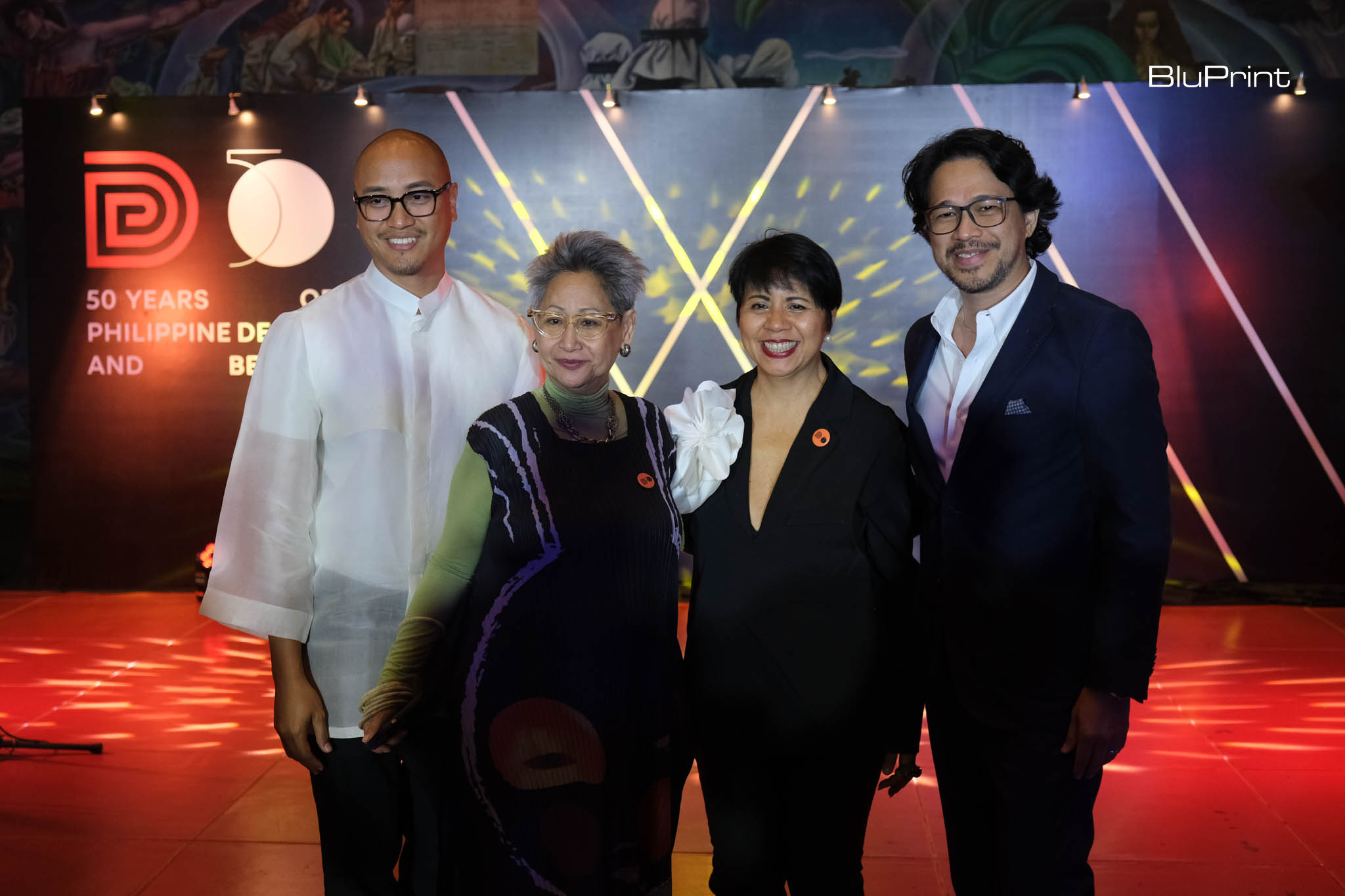
Art x Design was curated by Marian Pastor Roces, with its overall design done by Arch. Royal Pineda. It’s a genuine collection of some of the country’s innovative designs for the past fifty years. It showcases the work of Filipino icons from various fields; from fashion and furniture design, to architecture and photography.
The exhibition itself is considered a “first draft,” alluding to Design Center’s ever-changing approach on Art x Design’s curation. It looks towards the past and the future, showing the creation of a community that thrives across the world through its own unique Filipino aesthetic.
Looking At the Past, Seeing the Future

Art x Design contains a multitude of objects and products both from private and Design Center’s own collections. Roces’ curation clearly shows the local industry’s progression.
We can see the cycling of different trends and movements. It moves from modernist designs to an effort to localize production that creates an identifiable Filipino flavor. Early in the exhibit, there’s a focus on artisanal furniture that illustrates how Filipino designers used sustainable materials before it was even a trend, and in the designs’ uniqueness and creative origins.
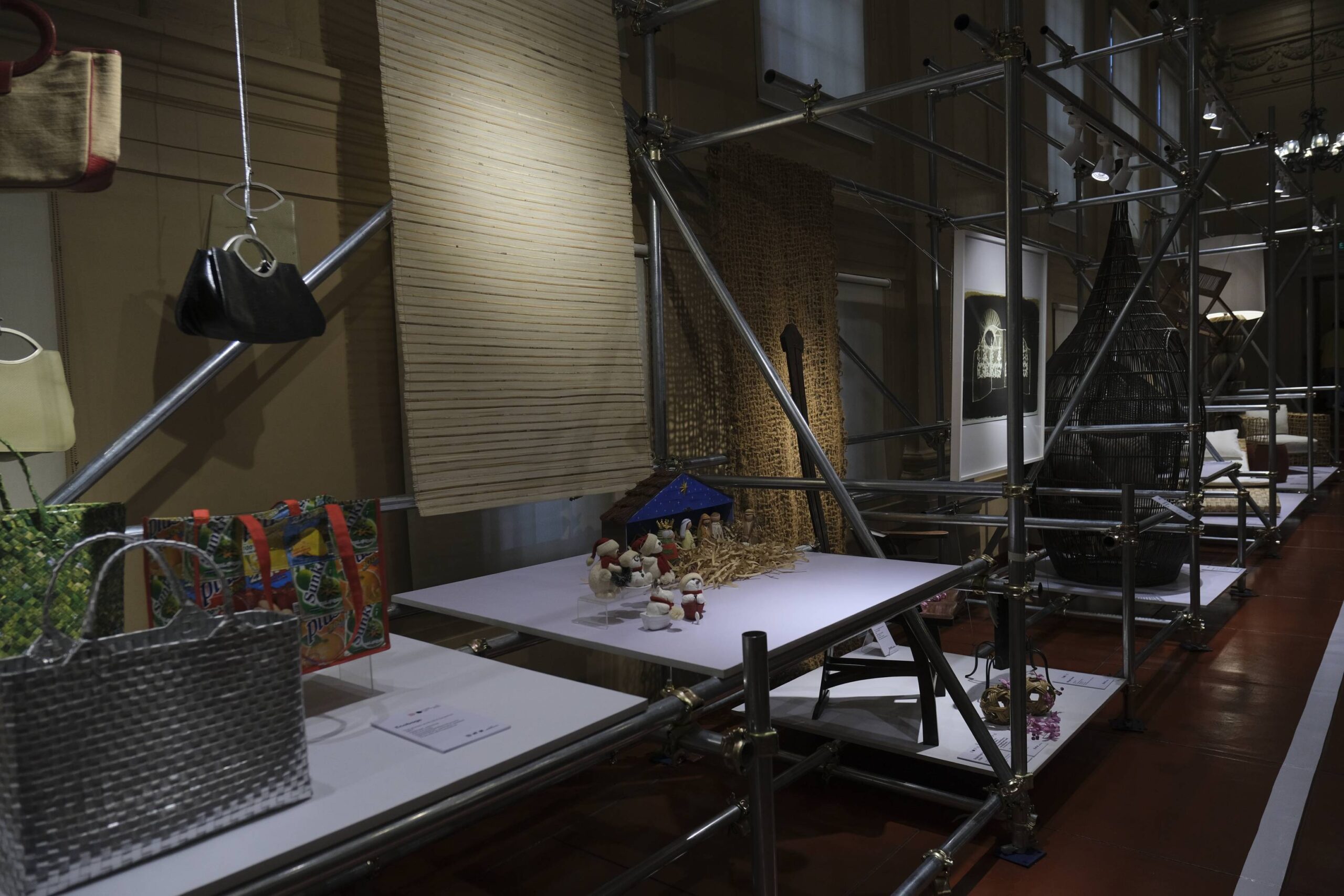
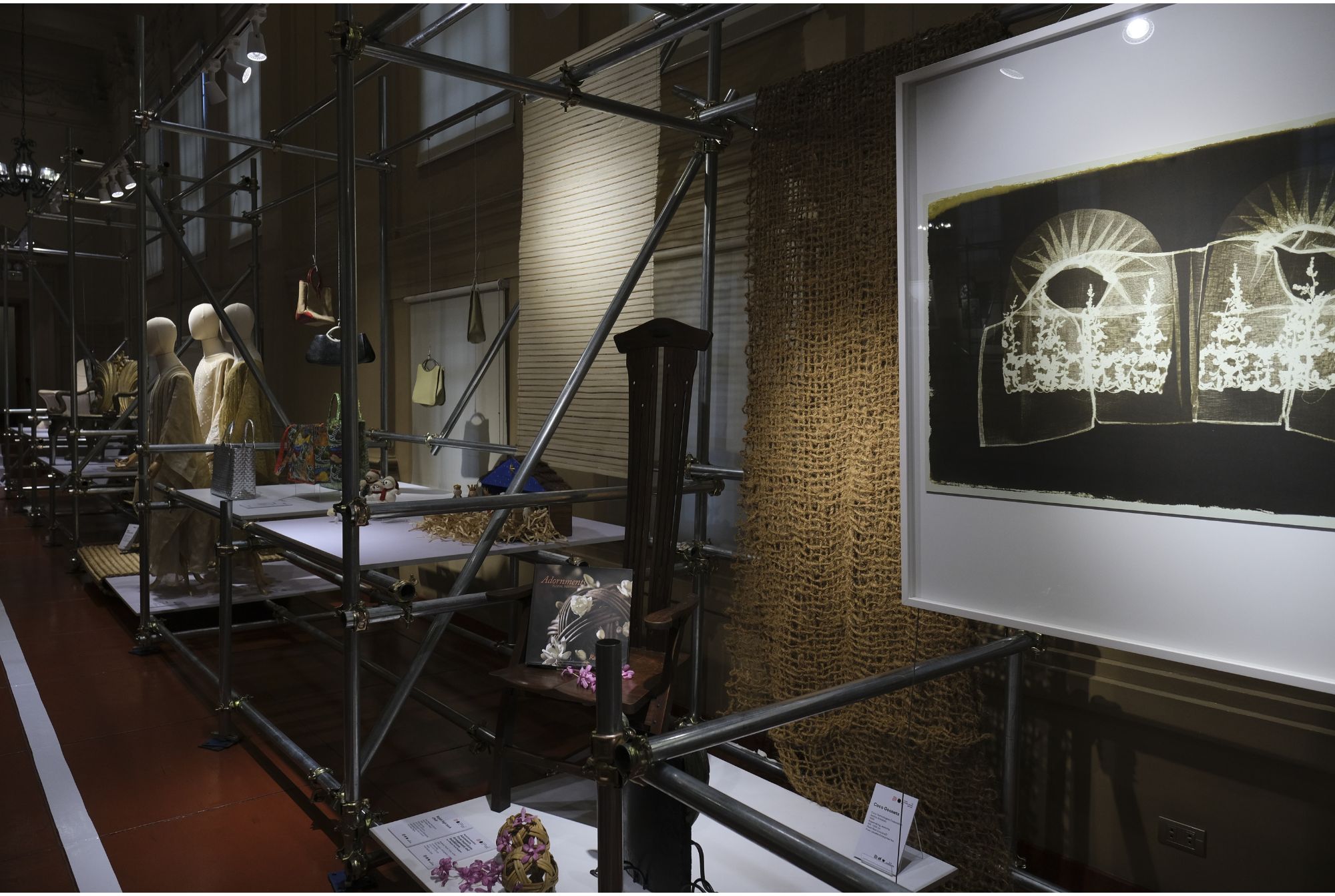
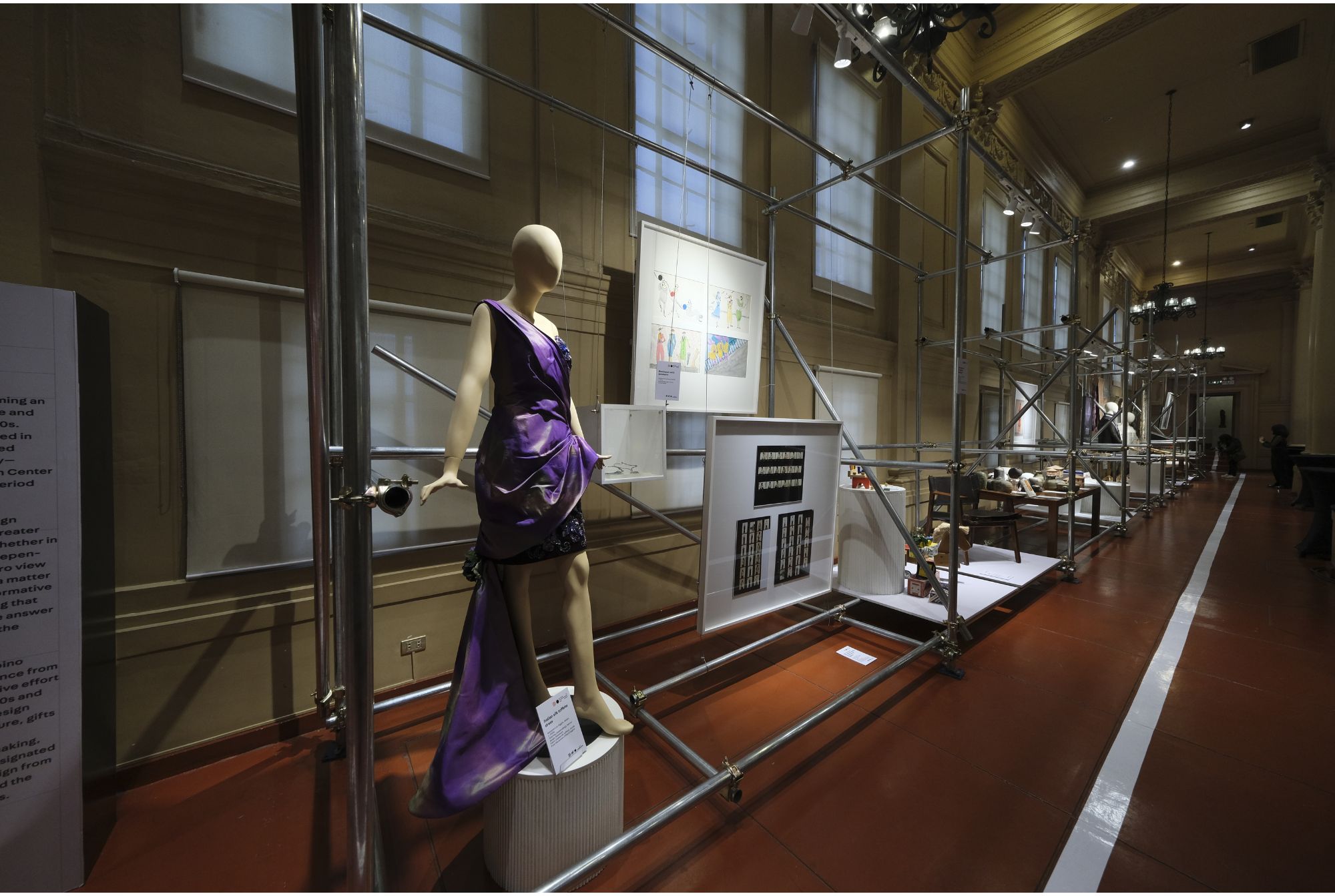
Photographed by Ed Simon.
It’s very evocative of how the Filipino design industry is less a giant corporation and more of a small band of communities helping each other out. Roces constantly points out that many of the country’s best designers are localized within three locations: Pampanga, Cebu, and Davao. And within these three locations, many designers source their materials, like rattan and pinya fibers, locally.
It ensures that the production line remains distinctly Filipino, even as the country looks to trade beyond its borders.
Modern Design for Modern Times
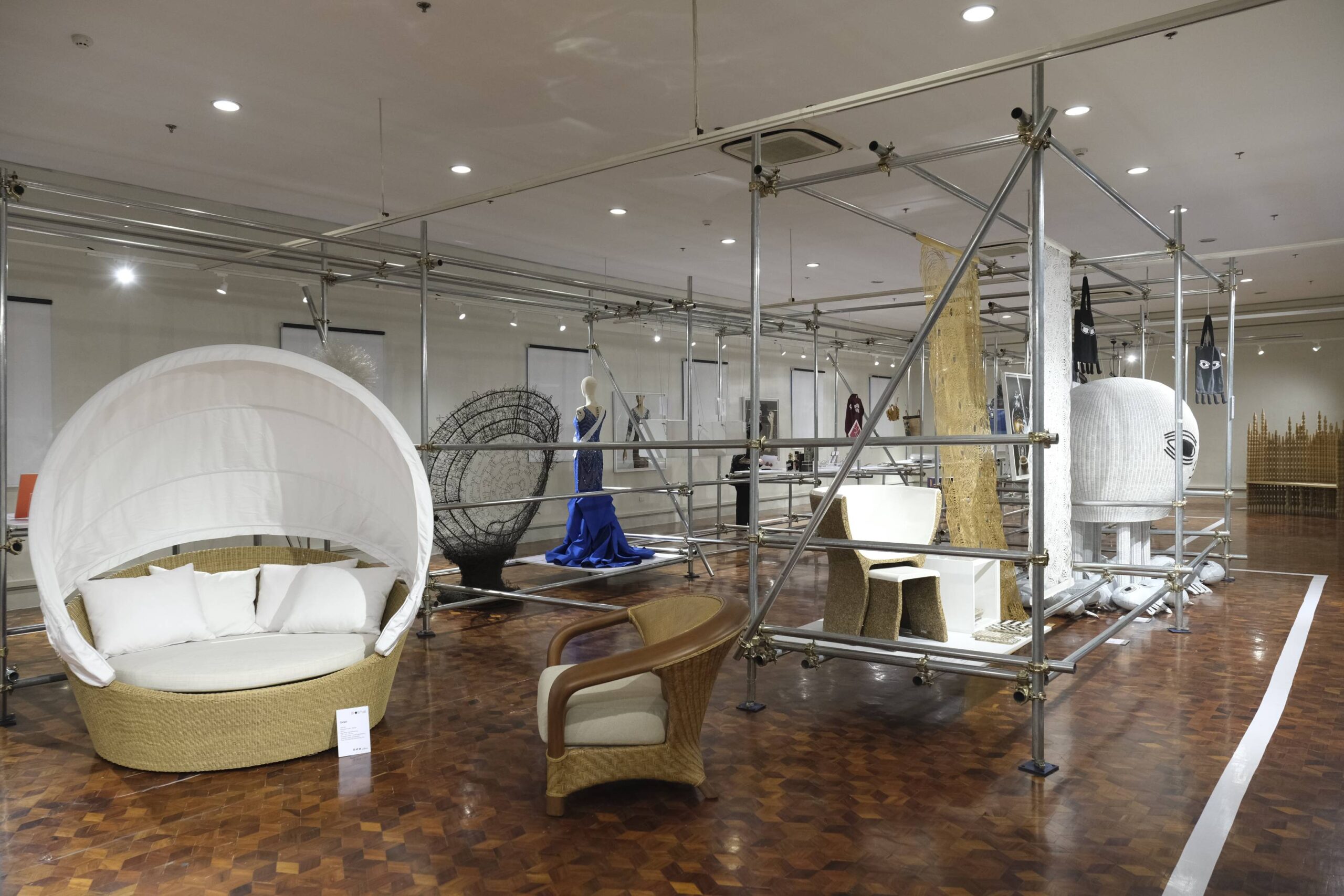
The exhibit also ensures to showcase our modern methods in creating art from design. Especially in the portion of the exhibit that covers the new millennium, Roces pointed out that local industries had to adapt as China produces cheaper goods in comparison to ours.
Because of that, this section doesn’t just showcase our modern design. It also portrays the deliberate use of local materials and how we market these products .
A selling point for many of the designs is that they’re made from local raw materials and produced in limited quantities. Influenced by the Movement 8 design initiative in 1999, many modern-day designers aim for artisanal craftsmanship over mass production.




Photographed by Ed Simon.
Whether it’s the bottle labeling of Philippine Lambanog or limited edition action figures from Juanito Maiquez, there’s a sense of branding in how we perceive Filipino products. It’s uniquely in tune with market forces of our time. The use of eye-catching and innovative ideas carve out a space for Filipino designs and products in a world fast becoming more and more consolidated towards a few behemoths of industry.
It’s interesting to see Philippine design strive towards a unique Filipino identity as global competition makes it essential to stand out against the rest of the world.
You can definitely see this in the final portion of the exhibit, “The Future Today.” The room features fifty variations of the Buri Chair chair designed by National Artist Arturo Luz. Some go really creative on the reconstructions, and some just put their own small spin on the chair. However the designers approach them, the idea it pushes is simple: to create Filipino products is to create something unique in this world.
Where Philippine Design Goes From Here

The Design Center has big plans for its exhibit beyond the museum, including potential “publications for different publics” as well as products inspired by the exhibit.
Whatever the future holds, however, it will still display the ingenuity of the Filipino. Moreover, it will continue pushing for progress in how we design our products. It’s progress in the sense that we pursue a national identity to help us stand out against the competition.

The exhibit is currently on the fourth floor of The Senate Session Hall in the National Museum of Fine Arts. The museum offers guided tours of the exhibit every Wednesday.
Related reading: Filipino Design: The Past, Present, and Future of Sustainability


